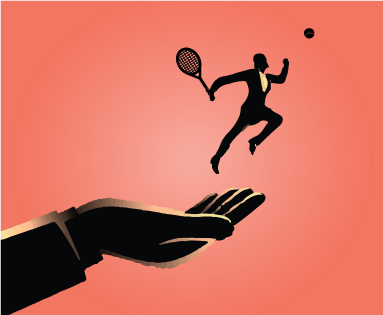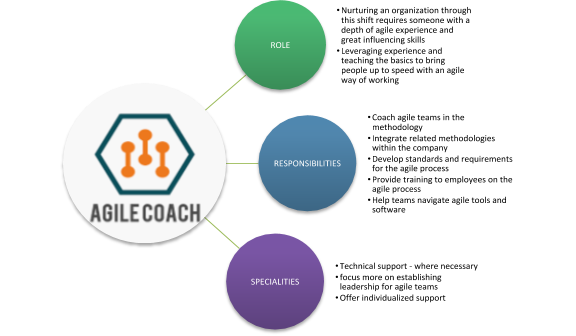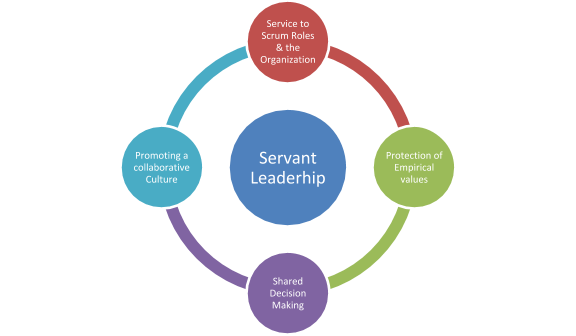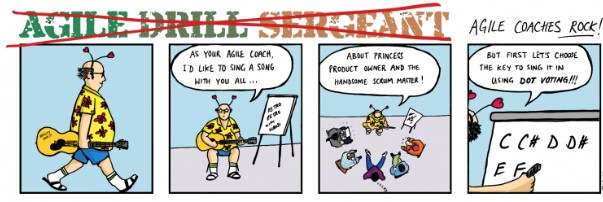Agile Coach vs Scrum Master: What's the difference?
“Your greatest contribution in life is not something you do but someone you raise.” - Andy Stanley
Overview
What do you think of Agile? That it’s only a software development methodology? Or you think it’s an umbrella term for multiple software development methodologies?
Well, you can’t be any further from the truth.
Ever wondered, “who is an Agile coach?”
Let’s explore the answer to that question with Serena’s tennis loss story.
The Agile Coach Story

It was late August 2018, and it was the US Open finale.
Serena Williams was going strong until that day’s match. She’ll be playing the young Japanese, Naomi Osaka. Watching her from the stands was her 50-year-old coach, Patrick Mouratoglou. He saw it. She’s frustrated.
And what followed was unheard of in all of tennis history.
Naomi beat Serena in straight sets following a game penalty in the second set of the final.
And then she got penalized with a point for breaking her racket. She also received another penalty for verbal abuse of the chair umpire. This time, Serena was fined $17,000 for calling the umpire a “thief.”
After the match, Patrick admitted he’d been caught red-handed by the chair umpire, Carlos Ramos. But Serena continued to deny she had received coaching.
After the incident, speculations of Patrick facing the ax filled the air. However, the coach has survived and continues working alongside the 23-time Grand Slam champion.
Asked how he survived the event, Patrick answered,
“I hope that our seven years’ relationship is a bit stronger than a chair umpire. I always think she can win, and she will win. Because she’s Serena. And because my goal is to make sure she’s ready and I feel she’s ready.”
Despite the loss and slipping into her lowest ever ranking, Serena fought hard and made a strong comeback the following year. She soon became the oldest grand slam finalist in the open era breaking into the top 10 amidst rumors of forced retirement.
Finding the Agile Coach
What’s this story to do with an Agile coach?
You could look at coaching as helping individuals achieve their highest potential. Coaching uses specific techniques and tools to help people discover solutions to their problems.
It doesn’t matter who you coach. And team members’ skill level and capacities usually won’t stop a determined coach too.
A coach sets and keeps their eye on the goal. And then work backward from that goal, figuring out the most effective and efficient way of getting closer to that desired end.
Who is an Agile Coach?

Defining an Agile Coach is pretty tricky. Many organizations perceive Agile coach differently. For this article, I’ll attempt to explain what makes the most sense, drawing from my personal experiences and research.
Fabiano Morais explains a delivery coach, which is another word for an Agile coach. See in his words:
“Our work as coaches is to understand where the teams are in their journey and to offer the right approach to support their growth. Our agenda is an improvement. We do that by bringing the right questions, providing good mental models, challenging people in their thinking and guide them towards building great products for our customers”
An Agile coach isn’t only responsible for organizing a Scrum team (or) teams. S/he ultimately helps the organization embrace Agile as a cultural shift.
To properly implement the Agile methodology, an Agile coach gets highly persuasive to secure buy-in from employees and key stakeholders.

Agile Coach Attributes
Who is a Scrum Master?
Ken Schwaber and Jeff Sutherland authored the Scrum Guide. In the November 2017 version of that Scrum Guide, Ken and Jeff outlined specific responsibilities of a Scrum Master.
Ken and Jeff say that a Scrum Master is responsible for promoting and supporting Scrum as defined in that Scrum Guide.
Scrum Masters take care of these responsibilities by helping everyone understand Scrum theory, practices, rules, and values.
The Scrum Master is a servant-leader for the Scrum Team.
One of the critical responsibilities of the Scrum Master is fostering communication between those inside and outside the Scrum team.
S/he helps those outside the Scrum Team understand which of their interactions with the Scrum Team are helpful and which aren’t. The Scrum Master encourages this interactiveness to maximize the value creation of the Scrum Team.
Scrum Masters should always aim to keep the human at the center while trying to nurture and continually improve on the attributes outlined below.

Scrum Master Attributes
Key differences?
Now that we have considered these two roles independently let’s examine their differences. Are they the same? Do they get merged at some point?
Well, read on.
.png)
Key differences between a Scrum Master & an Agile Coach
One other thing to consider. As a Scrum Master gains experience, the focus of continuing education shifts from processes to psychology and motivation.
Daniel Pink's books provide you with an excellent understanding of how to motivate and lead people to genuinely fulfilling careers.
.png)
A famous comic depiction of the progression towards becoming an Agile coach
(Cartoon courtesy: Pearson Education)
I believe the natural sequence is to become a coach, and from my experience, it’s the most valuable part for companies and their people. If you thought that the strength of the framework is in the team, rituals, and attitude, you might be surprised to find out that coaching is the way to go.
Coaching boosts creativity. You seldom have to worry about what product the team is developing. You’d derive joy seeing others grow and you’d feel your experience imparting on others and helping them.
Most coaches love the product development process so much that it mostly doesn’t matter what their team is building.

A comic depiction of multiple role interactions
(Cartoon courtesy: Agile Drill Sergeant)
Conclusion
In the end, differences between a Scrum Master and an Agile coach may abound. But a good Scrum Master can be an excellent Scrum team coach.
Unfortunately, not all Scrum masters reach that level. Probably less than half do. Even fewer develop the knowledge and skills to coach at the program or portfolio levels.
The reason most people don’t make this transition is that it requires the ability to explain very complex concepts.
Aspiring coaches will need to acquire the skills to persuade managers, directors, vice presidents, and other top executives to alter their practices. And they may even have to convince these senior executives to make room in their budgets to increase their teams' agility.
Enterprise Agile coaches have all those skills. They understand the difference between tactics and strategy. So they’re able to connect and persuade C-level executives and help them recognize the need to change their company culture.
Do you think Scrum Masters can do that?
I wish you all the very best on your Agile journey. If you want me to write about any topic, please leave a comment below, and I’ll be more than happy to consider them.
Click here to kickstart your Agile Career